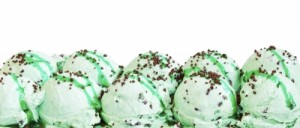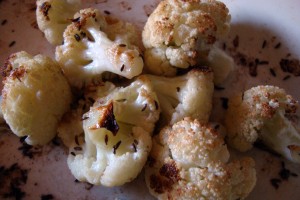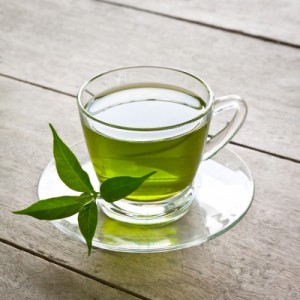
Image courtesy of Stuart Miles
I wanted to bring up a topic that I don’t talk about much, if ever, although one that I’ve had to live with for most of my life: cold sores. For as long as I can remember, I’ve been prone to an outbreak and if you suffer from them or know someone who does, then you know what I’m talking about. They’re unsightly, they’re painful, they can leave scars, and they feel like they can put my life on hold.
Ironically, the thought of addressing this topic now came as Valentine’s Day approached – how romantic! Call me a rebel, lol. But rather than talk about the benefits of dark chocolate or love, or how to keep your heart healthy, something attracted me to the lips. Maybe it’s because the holiday signifies love and intimacy–and kissing and I wouldn’t want something like this ruin (or prevent) a good kiss : )
If you’re someone who gets cold sores, then you probably know very well that they’re caused by Herpes Simplex Virus 1 (HSV-1). Amazingly, 95-98% of people harbor the virus and many may never know it if they don’t have an outbreak. While dormant, it resides in our neurons and when activated, it targets the skin and mucous membranes, often on or near the lips. If you do get one, it’s important to keep your hands away from your eyes to avoid ocular infections, including keratoconjunctivitis that can be serious. And HSV is contagious, so it’s important to keep your personal hygiene items like hand and face towels, your toothbrush etc., separate to avoid contaminating others.
Over the last 10-15 years, I’ve been pretty successful at reducing both the frequency and severity of cold sores through some trial and error with anecdotal and scientific evidence (you can read about here), and personal observation about when I’m most susceptible. My own personal treatment plan for HSV-1 has been relatively holistic. There are actually drugs available to prevent outbreaks; of course they don’t come without side effects. I have tried some of the topical treatments though that I’ll mention below.
In general, here are the triggers that I’ve found for myself. Many overlap with those commonly reported and they may vary from what you’ve found:
Overexposure to the sun – this can lead to dry, parched lips and in general, anytime my lips have gotten overly dry, I’ve been susceptible. In fact, if my lips get dry inexplicably and even lip balms don’t seem work, then I know something’s up and I take extra precautions.
Stress – not surprising, since stress can weaken the immune system and make it more difficult to ward off a viral attack.
Acidic foods – for me specifically, these include things like citrus (oranges, grapefruit, and tomatoes, especially cooked), vinegars and drinks like Kombucha.
Arginine (arg)-rich foods like nuts and nut butters, seeds, coconut, even chocolate (sadly) – of course, foods that I love!
Poor diet in general – too much sugar and refined carbohydrates that are going to weaken the immune system and of course promote hormone imbalances and stress. And combining this with my monthly cycle increased the odds.
So, what can you do to reduce the likelihood of getting a cold sore or quicken healing? Many measures are obvious and some not so:
Keep your lips protected in the sun – Wear a lip balm, preferably with sunscreen when you’re outdoors. There are many brands out there, but I like Burt’s Bees because it’s petroleum- and chemical-free and easy to find. As a general rule, avoid letting your lips get dried out or chapped. If it happens, check in on your hydration and your diet, both of which can have an impact.
Reduce stress – Exercise, proper diet, enough sleep, mindfulness techniques like meditation and breathing can all help here.
Avoid trigger foods – Maintain a healthy diet free from sugars and refined carbohydrates and try cutting back on citrus or concentrated foods like nuts and seeds, etc.
Take l-lysine (lys) – An essential amino acid found in high levels in animal products, l-lysine is believed to antagonize l-arginine, which activates HSV-1. Foods like nuts and seeds contain both arg and lys, but the levels of arg are often much higher. Some studies have shown that l-lysine supplementation can help. I’ve been taking about 1000 mg everyday for at least a decade and sure enough, if I go off of it for several days, I’m more likely to have an outbreak. I’m also more able to keep foods like nuts and seeds (and chocolate) in my diet if I am consistent with taking lys.
Apply ice – Over the last couple of years, I’ve found that at the first sign of an outbreak (usually a tingling on my lip), if I apply ice for as long as possible, even if I do get a cold sore, it’s usually much less severe and heals more quickly. It may not always be practical to do this, but if you’re at home and can take the time, it may be worth it.
Use over the counter meds – In the past, I’ve used ointments like Abreva and also a homeopathic cream that worked well to shorten the duration of an outbreak. Zinc sulfate has also been shown to speed healing time and there are a number of additional herbal remedies listed here that I haven’t specifically tried.
Seriously, cold sores are no fun and preventing them is always better than dealing with the healing. Is there something you’ve found that works for you? I’d love to hear about it!
And if you’d like support with transitioning your diet and with strategies for managing stress, I have an arsenal of tools that can help. An eating plan and lifestyle strategy that reduces the chances of getting cold sores will help you across the board with your health. Want more information? Contact me to see how to get started.
 Energy was the topic at the most recent Institute for Functional Medicine conference in all forms. And this included a form of energy that often feels like the elephant in the room – electromagnetic frequency (EMF) energy. Today, significantly more so than even four years ago, we’re surrounded by EMFs from cell phone towers and WiFi. And the phones are getting more powerful than ever, which also means that the radiofrequency (RF) energy they’re emitting is stronger than ever.
Energy was the topic at the most recent Institute for Functional Medicine conference in all forms. And this included a form of energy that often feels like the elephant in the room – electromagnetic frequency (EMF) energy. Today, significantly more so than even four years ago, we’re surrounded by EMFs from cell phone towers and WiFi. And the phones are getting more powerful than ever, which also means that the radiofrequency (RF) energy they’re emitting is stronger than ever.



